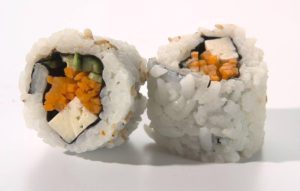
Going out for sushi seems like a pretty good choice when your other options are burgers or pizza. But is it really a clean option, period?
As with so many of life’s biggest questions, the answer isn’t black and white. Sure, fish like tuna and salmon are great sources of protein and hard-to-get omega-3s. But then there’s the white rice. And the soy sauce. And the tempura batter and spicy mayo. If you’re not careful, your seemingly innocent sushi plate could add up to one high-calorie, bloat-inducing meal packed with refined carbs, sodium, and unhealthy fats. (Might as well have gone to the burger place, huh?)
But don’t worry, you’re not doomed. “If you order the right way, sushi can be part of a healthy diet,” says Beth Warren, RD, author of Living Real Life With Real Food.
I – Word Understanding
Black and white – clear; clearly-defined
Bloat-inducing – causing the stomach to be filled with gas (or sometimes fluid)
II – Have Your Say
To make sushi a part of your healthy diet, you have to steer clear of the following stuff:
1. Anything tempura – “Tempura” is keyword for “battered and fried,” so stay away, Many restaurants also fry in soybean oil, which is usually genetically modified.
2. Spicy rolls. The tuna, salmon, or crab part is perfectly fine. The spicy mayo sauce? Not so much.
3. Plain veggie rolls. Basic cucumber or avocado rolls aren’t the worst thing in the world. But they might leave you hungry after an hour or two, since they’re pretty much devoid of protein.
4. Regular soy sauce. A measly tablespoon of soy sauce manages to deliver 879 mg of sodium.
Here are the suggested orders:
1. Tuna or salmon and avocado rolls. Simple rolls with seafood and avocado are the best choice, since they’re high in belly-filling protein and healthy fat, and free of calorie-laden extras.
2. A side salad. If two rolls doesn’t seem like it’ll be enough to fill you up, have a small salad on the side.
3. A giant glass of water. Even with low-sodium soy sauce, you’re probably getting a lot of salt. Drinking water with your meal can help offset bloat-inducing water retention later on.


